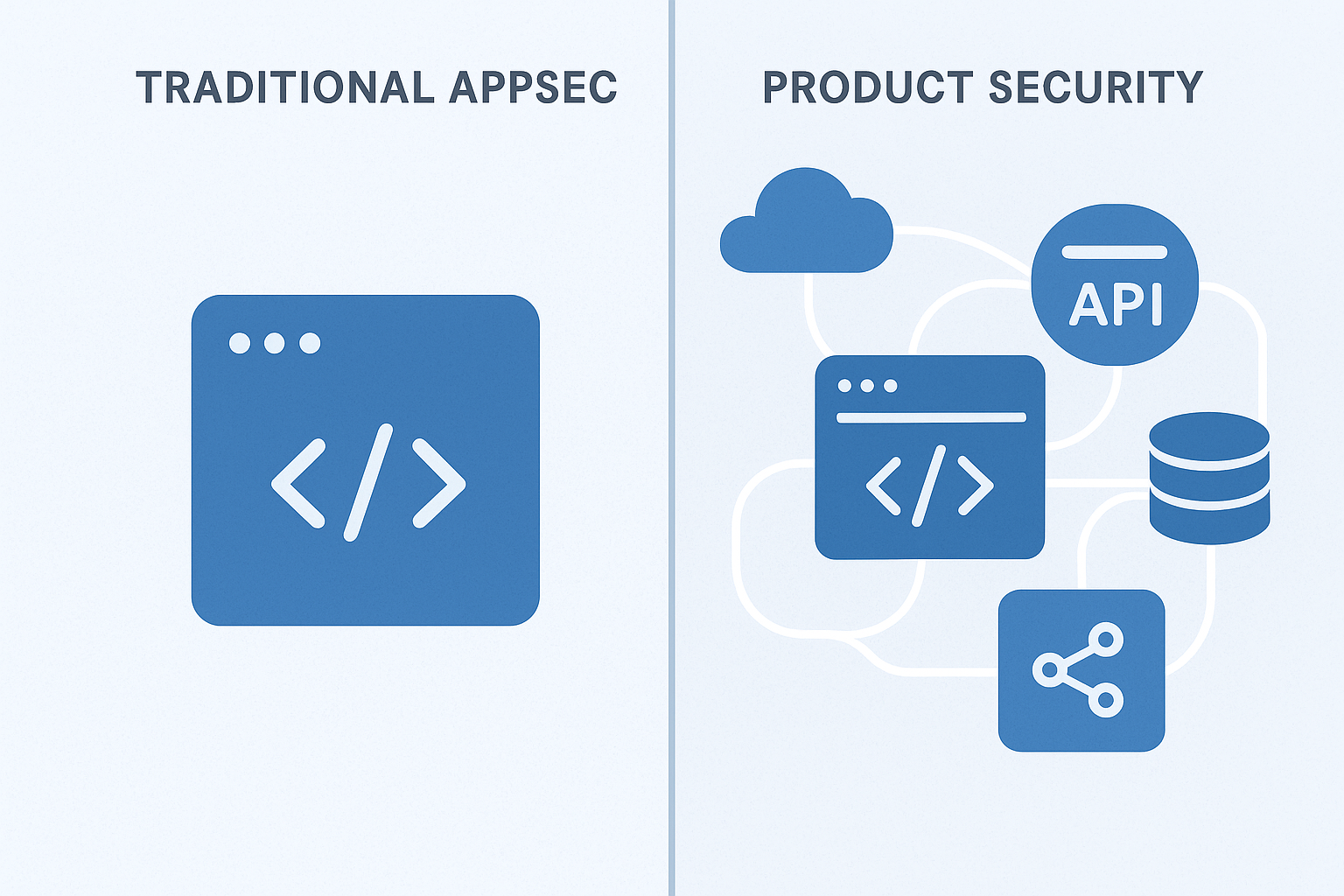· Appaxon Team · insights · 2 min read
What is Product Security?
Product security is the comprehensive practice of securing software throughout its entire lifecycle—from development and testing to deployment and maintenance.

Product security is the comprehensive practice of securing software throughout its entire lifecycle—from development and testing to deployment and maintenance. Unlike traditional application security that focuses primarily on individual applications and code vulnerabilities, product security takes a holistic approach that encompasses the entire product ecosystem. This includes secure development practices, supply chain integrity, cloud infrastructure security, API protection, compliance enforcement, compensating security controls, and continuous monitoring. Product security extends far beyond just finding and fixing code vulnerabilities; it’s about proactively managing risk across all components that make up modern software products.
Core Responsibilities
Product security teams are responsible for integrating security into every stage of the software development lifecycle (SDLC), managing third-party dependencies and supply chain risks, enforcing regulatory compliance, conducting threat modeling and risk assessments, implementing continuous security testing, and maintaining ongoing vulnerability management.
Modern Threat Landscape
The biggest risks they address include supply chain attacks (like SolarWinds), secrets exposure and poor credential management, cloud misconfigurations, vulnerabilities in AI-generated code, and insecure APIs and third-party integrations. These threats go well beyond traditional code-level vulnerabilities and can directly impact business continuity, customer trust, and regulatory compliance.
Product security represents the evolution from reactive vulnerability management to proactive, comprehensive risk management that aligns with modern software development practices and the complex threat landscape organizations face today.




